- The Floor Level Amenity Should Be Valued Separately From The View Amenity
- Buyer Fear Of Certain Numbers, Like 4 and 13, Really Is A Thing
- 85% Of Otis Elevator Panels Don’t Include The 13th Floor
Having inspected more than 8,000 Manhattan properties in my career, mostly co-ops and condos, I’ve spent a lot of time in elevators. Often, the 13th-floor designation is missing from the list of buttons. I chalk it up to superstition and protecting people who have triskaidekaphobia, the irrational fear of the number 13. Now think of Apollo 13 and Friday the 13th. But beyond the superstition aspect, the floor level in vertical housing markets is an unsung amenity that is usually overshadowed by the view amenity, one of the biggest differentiators in multi-family valuation.
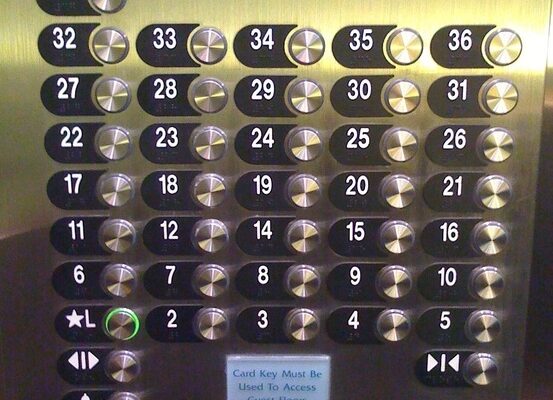
Thinking About The Value Impact Of Floor Level
Anecdotally, I tend to see the 13th floor skipped in older Manhattan buildings, often those built before World War II (pre-war). In particular, these buildings without 13th floors tend to be smaller and without full services, such as a doorman amenity.
In the context of valuation, I’ve measured the value of floor levels over the years, but it’s tough for market participants because the view amenity is interwoven with the floor level amenity. I find it gets a lot easier to understand floor-level value when it is separated from the view amenity. In New York City, there is a premium for higher floor levels, even if there is no change in view. This is due to the further an apartment is from the street the:
- Perception of greater safety
- Perception of less street noise
- More natural light on higher floors, even without a view change
The view amenity is added to the top of the floor-level amenity (higher is generally better).
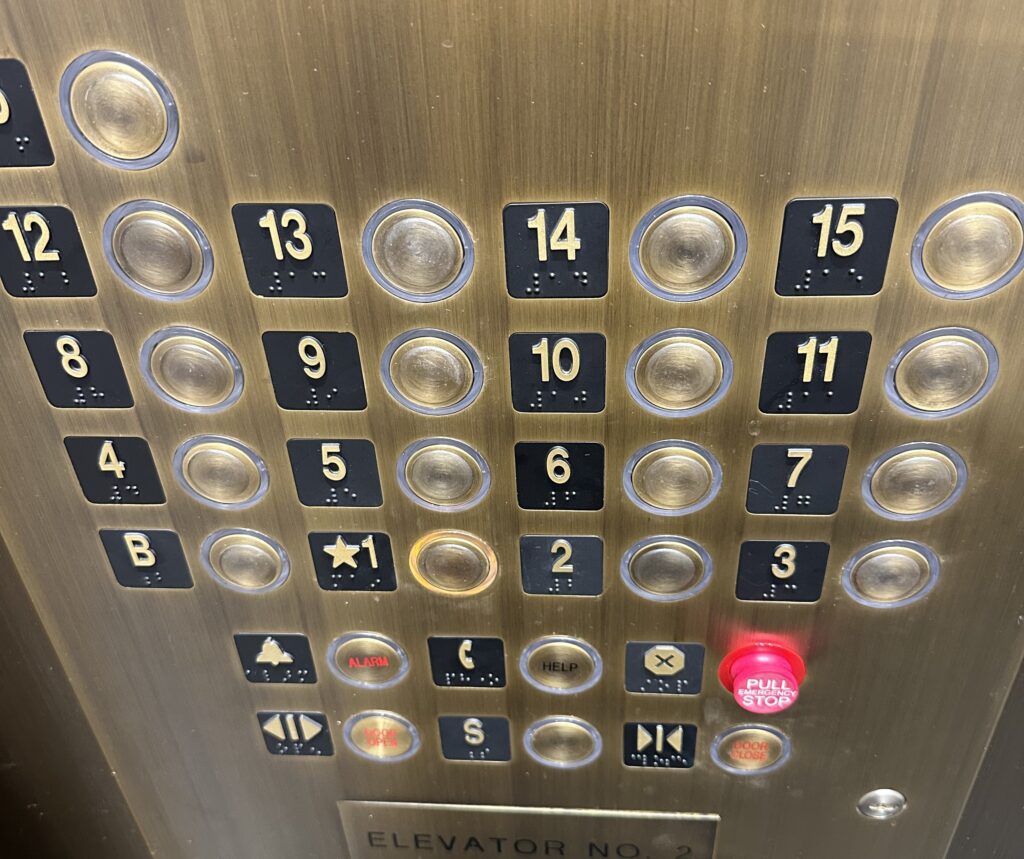
Do buyers see the difference between the 12th and 13th floor in the same way they do the 12th floor and the 14th floor if the 13th floor is skipped? The short answer, after thousands of valuations, is probably yes.
My Three Attempts To Visualize The Floor Level Amenity In Public
New York Magazine (2012) – My favorite attempt at valuing the floor level of a highrise multi-family was done for New York Magazine back in 2012: What Price Height and Light? I selected 301 West 57th Street to perform the exercise. This building was only a few blocks from our first office and my first apartment. The photo film processing store where we took our photos to be developed (pre-digital) was a block away, so I roamed around this building quite a bit. Before it was completed in 1988, our firm was only two years old. I think of the former FedEx office across the street on Eighth Avenue when I see photos of this building. That’s because a pedestrian was decapitated in front of that store by construction debris that blew off the building – we unfortunately nick-named the building the “Tower of Death” within our office for a short while. Oof.
The graphic is missing from the archived New York Magazine article, which was a spectacular graphics effort that I keep on my desk to this day. The 13th-floor issue wasn’t addressed in this particular analysis, and this building doesn’t have a 13th floor. The idea was to value all the units in the building with just a couple of sales, relying on market differences between the sales to measure the view and floor-level amenities. I think it turned out to be a masterpiece.
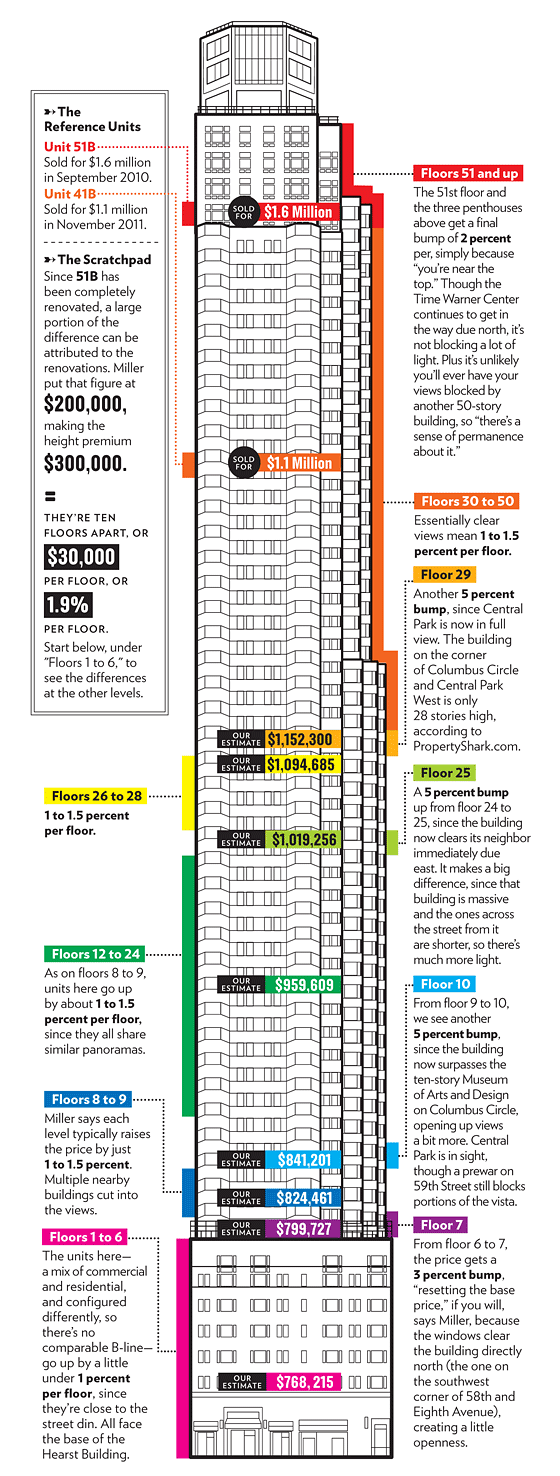
The Real Deal (2009) – In an earlier attempt effort to analyze floor level, I looked at all the co-op and condo sales in Manhattan for The Real Deal in 2009 and calculated the average price per square foot by floor level to isolate floor level patterns. The 13th floor got a little weird, probably from all the buildings that didn’t have one (18.4%). What I loved about this analysis is it confirmed the floor-level anomalies of the lower floors:
- 1st floor – 19.3% jump to the second floor, reflecting concerns about security, privacy, and noise levels.
- 2nd floor – 11.4% jump to the third floor, reflecting concerns about security (scaffolding), privacy, and noise levels.
- 7th floor – jump reflects penthouse and roofline breaks from adjacent 6-story buildings.
- 13th floor – data suggests only 18.4% of buildings with a 13th floor actually call it that.
- Above the 13th floor – market share declines with height, reflecting fewer apartments, and the floor level price per square foot continues to rise.
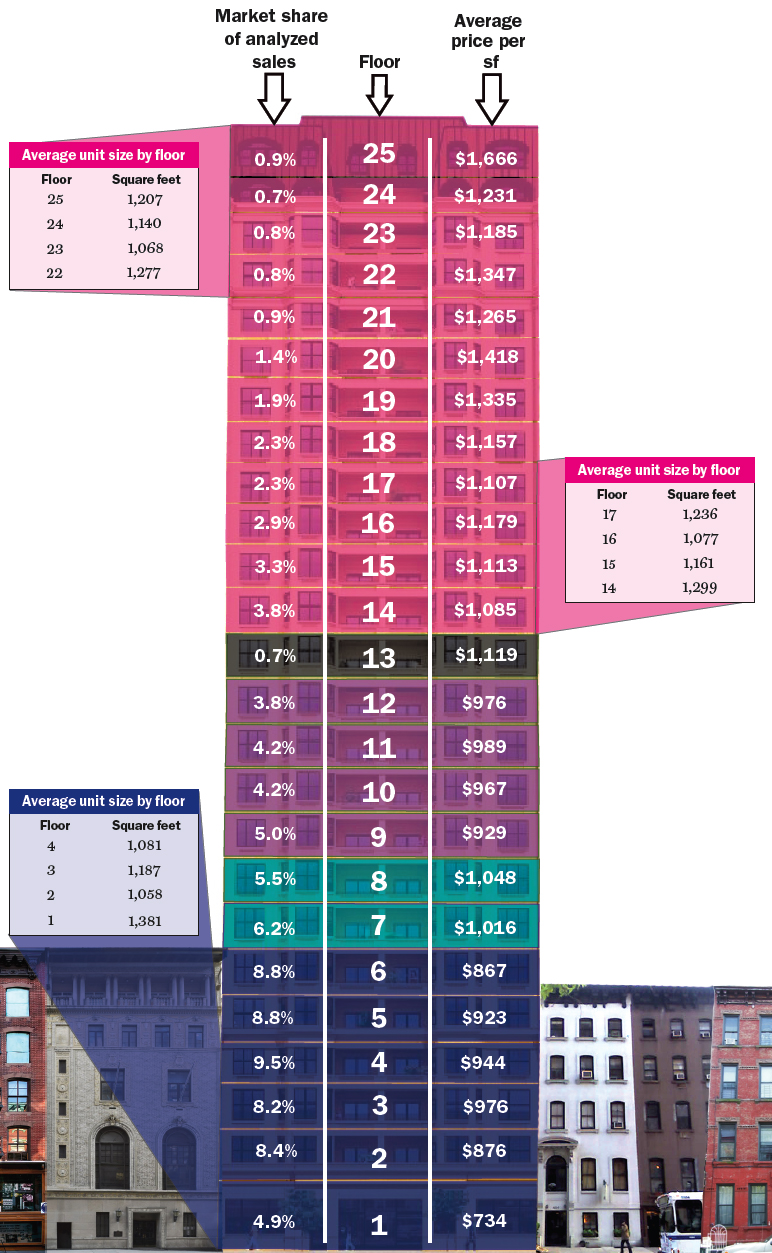
NYU/Furman Center (2006) – In an earlier, more academic approach, I worked with the NYU/Furman Center on a white paper, The Condominium V. Cooperative Puzzle: An Empirical Analysis Of Housing In New York City. The draft version was covered in the New York Times in 2003 as So How Much Is That . . . . . . . . Worth? It was peer-reviewed at economic conferences across the U.S. and published in the Journal of Legal Studies at the University of Chicago in 2006. One of the byproducts of this multiple regression analysis was a per-floor level analysis using about 100,000 of our Manhattan closed sales, of which co-ops comprised 80% of the market and are not yet public record. Before considering views, floor-level values change by roughly 1% per floor. We still see this general relationship in our New York City appraisal practice today.

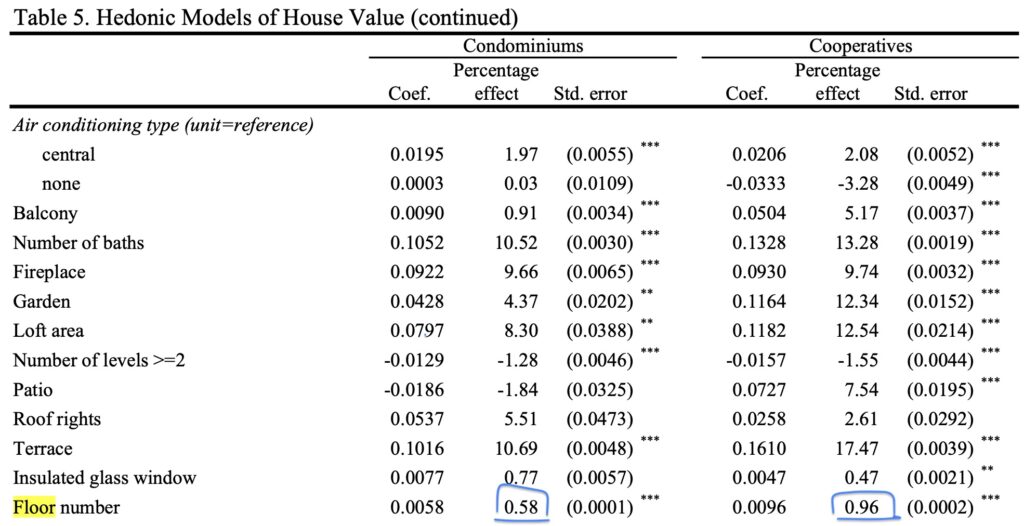
More Weirdness About Floor Level And Superstition
Otis Elevator says that 85% of their elevator panels don’t include the 13th floor. There are other superstitions as they relate to floor level beyond the 13th floor. There is a phobia about the number 4 in Asia known as tetraphobia, which is why floor levels on the 40th through 49th floor are often missing in casinos. The largest group of international tourists from Las Vegas are from China, so Casino owners are hedging their bets. In Manhattan, one of my early employees used to work in the sales office of the Police Building Conversion, which was adjacent to the Chinatown neighborhood of Manhattan. She told me sales were initially very slow because a gun shop nearby had a sign image pointed at the new development and was thought to bring bad luck. Imagine being a developer and grinding out a project for four years to run into a market force like that. “8” is considered a lucky number. When the Epstein mansion at 9 East 71st Street was sold after his death, the asking price was set at $88 million and sold for $50 million. When I saw those “8”s in the price, I assumed the agent was attempting to market the property to international buyers from Asia since the initial price was so high, considering what went on there.
Who knew numbers were such a thing?
Did you miss yesterday’s Housing Notes?
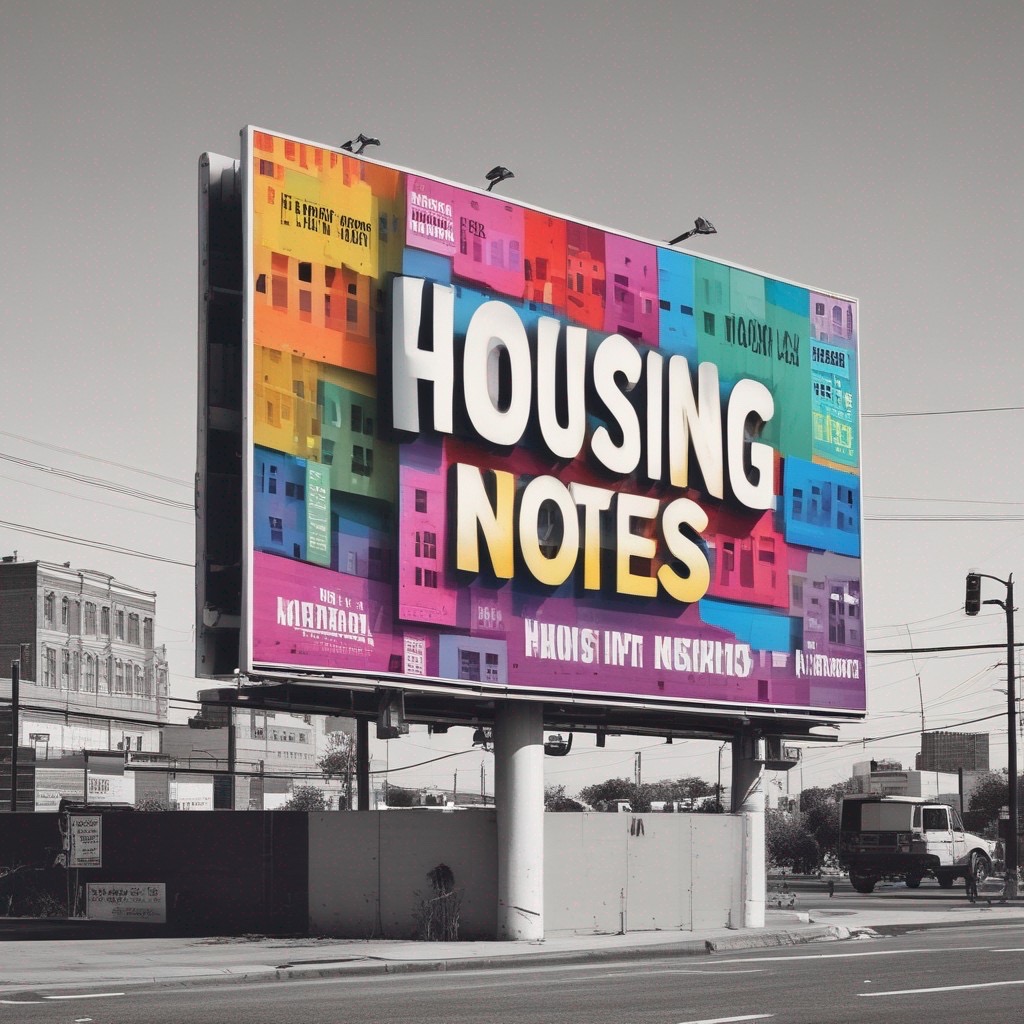
Housing Notes Reads
- Repost: Measuring Manhattan Values By Floor Level [Miller Samuel]
- [ChartFloor] Manhattan Price Per Floor Breakdown [Miller Samuel]
- Central Park Place [Wikipedia]
- So How Much Is That . . . . . . . . Worth? (Published 2003) [NY Times]
- Exploring hotel superstitions: The mystery of the missing 13th floor [Scripps News]
- Why do many Las Vegas casinos skip floors 40-49? [Review Journal]
- Superstition in Real Estate [Appraisal Buzz]
Market Reports
- Elliman Report: Manhattan, Brooklyn & Queens Rentals 7-2024 [Miller Samuel]
- Elliman Report: Florida New Signed Contracts 7-2024 [Miller Samuel]
- Elliman Report: New York New Signed Contracts 7-2024 [Miller Samuel]


